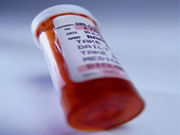Target levels more likely to be achieved in departments that prescribe more statins
MONDAY, Feb. 1, 2016 (HealthDay News) — Some clinical departments tend to undertreat when prescribing statins, according to a study published in the February issue of the Journal of Clinical Pharmacy and Therapeutics.
Hun-Sung Kim, M.D., Ph.D., from the Catholic University of Korea in Seoul, and colleagues examined the department-specific disparities and achievement rates for low-density lipoprotein cholesterol (LDL-C) targets based on each department’s prescription patterns for 31,718 patients who had been prescribed a statin. Based on the National Cholesterol Education Program-Adult Treatment Panel III guidelines, patients were classified into high-risk (target LDL-C <100 mg/dL) and moderate-risk (target LDL-C <130 mg/dL) groups.
The researchers found that statins were most commonly prescribed in cardiology and endocrinology departments (32 and 26.6 percent, respectively). Target LDL-C levels were achieved by 70 percent of high-risk patients in the cardiology, endocrinology, and cardiac surgery departments, while 79.2 percent of the moderate-risk group achieved target levels. In most other departments, the target achievement rates were below 70 percent for high-risk patients. The likelihood of achieving target LDL-C levels was higher for departments that prescribed a greater number of high- or intermediate-potency statins. There was a significant positive relationship for the group that achieved their target LDL-C levels, from low to high potency.
“To reach to the target LDL-C levels, physicians must overcome their tendency to undertreat with statins,” the authors write.
Copyright © 2016 HealthDay. All rights reserved.








